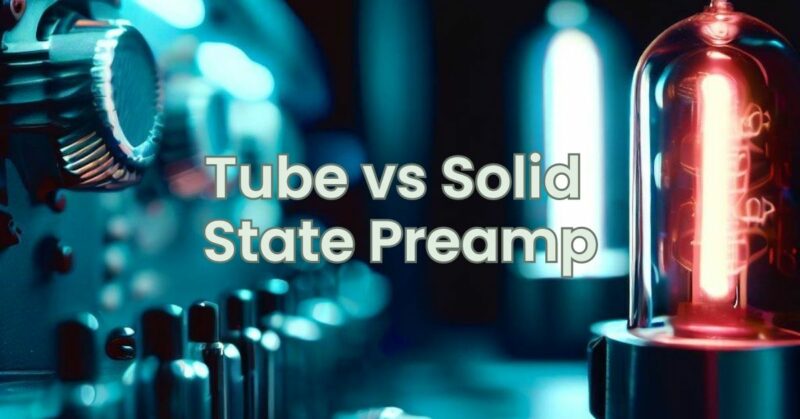When it comes to audio equipment, the choice between a tube preamp and a solid-state preamp is often a topic of discussion among audio enthusiasts. Both options have their distinct characteristics and sonic qualities. In this article, we will delve into the differences between tube and solid-state preamps to help you understand their unique attributes and make an informed decision based on your preferences and audio needs.
Tube Preamps
Tube preamps use vacuum tubes to amplify the audio signal. Vacuum tubes are electronic devices that use a heated filament to create a vacuum that allows electrons to flow through it. This process creates a warm, smooth sound that is often preferred by audiophiles.
Solid State Preamps
Solid state preamps use transistors to amplify the audio signal. Transistors are electronic devices that use semiconductor materials to amplify the signal. This process creates a cleaner, more accurate sound that is often preferred by recording engineers.
Which is Better?
The debate over whether tube or solid state preamps sound better has been raging for years. There is no clear consensus, as both types of preamps have their own strengths and weaknesses. Ultimately, the best way to decide which type of preamp is right for you is to listen to both and see which one you prefer.
Here is a table that summarizes the key differences between tube and solid state preamps:
| Feature | Tube Preamp | Solid State Preamp |
|---|---|---|
| Amplification method | Vacuum tubes | Transistors |
| Sound signature | Warm, smooth | Clean, accurate |
| Price | Typically more expensive | Typically less expensive |
| Power requirements | More power required | Less power required |
| Durability | Less durable | More durable |
Conclusion
Tube and solid state preamps are both great options for audio enthusiasts. The best way to decide which type of preamp is right for you is to listen to both and see which one you prefer.
Here are some additional details about the advantages and disadvantages of tube and solid state preamps:
Tube Preamps
- Advantages:
- Warm, smooth sound
- More responsive to musical dynamics
- Can add “character” to the sound
- Disadvantages:
- More expensive
- Less durable
- Can be more prone to noise
Solid State Preamps
- Advantages:
- Clean, accurate sound
- More power efficient
- More durable
- Less prone to noise
- Disadvantages:
- Can sound “cold” and sterile
- Less responsive to musical dynamics
- Does not add “character” to the sound
Choosing between a tube preamp and a solid-state preamp ultimately depends on your personal preferences, the desired sound character, and the specific application. Tube preamps provide a warm, rich, and colored sound with pleasing harmonic distortion, while solid-state preamps aim for transparency and accuracy. Understanding the sonic differences, dynamic range capabilities, impedance matching considerations, and maintenance requirements of each option will help you make an informed decision that aligns with your audio preferences and system requirements. Whichever path you choose, both tube and solid-state preamps offer their own unique qualities, allowing you to enhance your audio experience and enjoy music reproduction at its finest.


